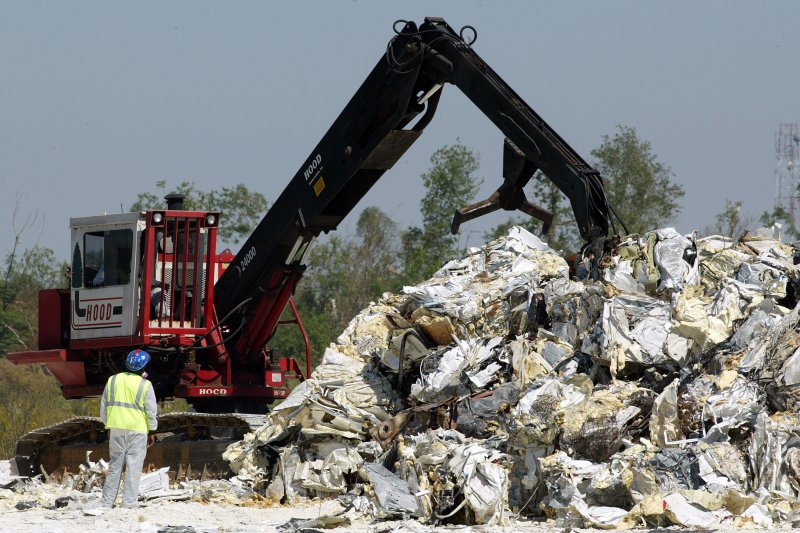If improperly thrown-out old fridges can leak freon gas into the atmosphere -- gas that contains ozone-eating chemicals. File Photo by A.J. Sisco/UPI |
License Photo
May 24 (UPI) -- Despite reports that improperly recycled refrigerators in China could explain a recent uptick in chlorofluorocarbon emissions, NOAA scientist Steve Montzka suggests the new mystery source of CFC-11 remains unaccounted for.
Earlier this month, Montzka and his colleagues identified rising levels of CFC-11, a common chlorofluorocarbon, in air samples collected in Hawaii. Emissions had been dropping globally over the last two decades.
The rise in CFC-11 concentrations first showed up in 2013, suggesting the chemical's proliferation can be explained by a new source -- a source scientists think is located somewhere in East Asia.
Chlorofluorocarbons like CFC-11 were used in a variety products, including refrigerators and air-conditioners, for decades before being phased out because of the Montreal Protocol. Many of those refrigerators and air-conditioners are still around -- as are the ozone-eating chemicals found inside them.
In diagnosing the health of the ozone and progress made in the wake of the Montreal Protocol, scientists have tried to account for these lingering chemicals. But in a study published earlier this month in the journal Environmental Science & Technology, a group of scientists argue those accounting attempts were lacking.
"Addressing such long-term impacts of refrigerants requires a dynamic understanding of the RACs' life cycle, which was largely overlooked in previous studies," scientists wrote.
The research suggests refrigerants found in refrigerators and air-conditioners in China aren't being properly disposed of, allowing ozone-eating chemicals to escape into the atmosphere.
"They will continue to impact our environment for decades to come if they are released due to mismanagement at the end of life," researchers wrote.
While the research illuminates a real problem, Montzka says the gas escaping from old Chinese air-conditioners can't account for his team's CFC-11 measurements.
"The emissive source of CFC-11 that is mentioned in the ES&T paper is more than one order of magnitude smaller than is needed to explain my atmospheric observations," Montzka told UPI. "Sure, the process mentioned in the ES&T paper may contribute, but their best estimate of CFC-11 emission from this activity is an amount that is not playing any appreciable role in the emission increase we reported on."















